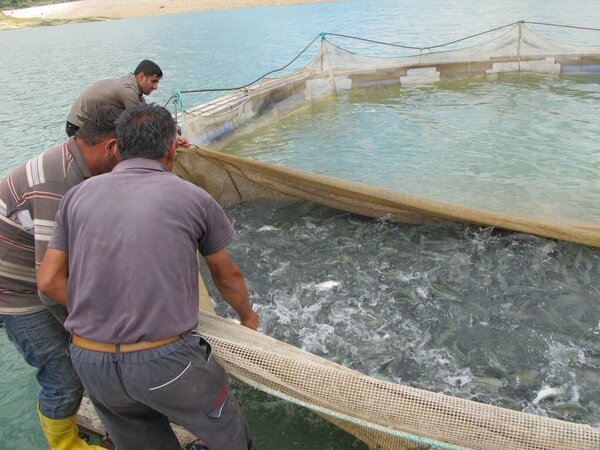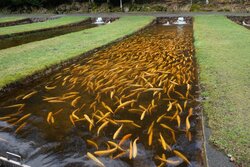Dossier
Aquaculture – Farming the Waters
Ulfert Focken | 05.07.2022
Aquaculture is the fastest growing segment of global food production. Today, aquaculture produces 66 million tonnes of fish and seafood per year (excluding seaweed). Soon it will take over the role of catch fisheries as most important supplier.
The growth of aquaculture has developed very differently around the globe. Asia is certainly the main driver of the expansion. The extension of aquaculture activities are politically desired in Europe, too. But, the intensification of aquaculture presents some environmental and economic challenges:
First of all, the use of fishmeal and fish oil as ingredients of fish feed is highly criticised (to feed fish with fish). Substitutes for fishmeal as a protein source are not easy to identify. For instance, the amino acids have to fit the specific needs of reared fish. In addition, defining animal welfare in the case of fish is difficult, too. A lot of fishes are swarm fishes. Thus, low stocking densities do not automatically lead to a higher level of fish welfare. In terms of economics, nowadays around 600 species are cultured in ponds, raceways, recirculating systems, net cages, and long lines. These variegated production systems perform differently economically as they depend on different and sometimes unknown cost and return structures.
The Thuenen-Institute of Fisheries Ecology does research on alternative vegetable protein resources for aquaculture feed, evaluates new aquaculture species and innovative rearing techniques. A team of researchers of the Thuenen-Institutes of Fisheries Ecology and Sea Fisheries analyses the economics of aquaculture on the farm and fisheries level worldwide. Overall, our research aims to support the development of ecological and economical types of fish production systems for the future.



![[Translate to English:] Logo des Bundesministerium für Ernährung und Landwirtschaft](/media/allgemein/logos/BMEL_Logo.svg)